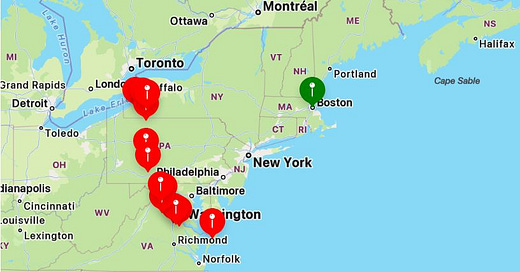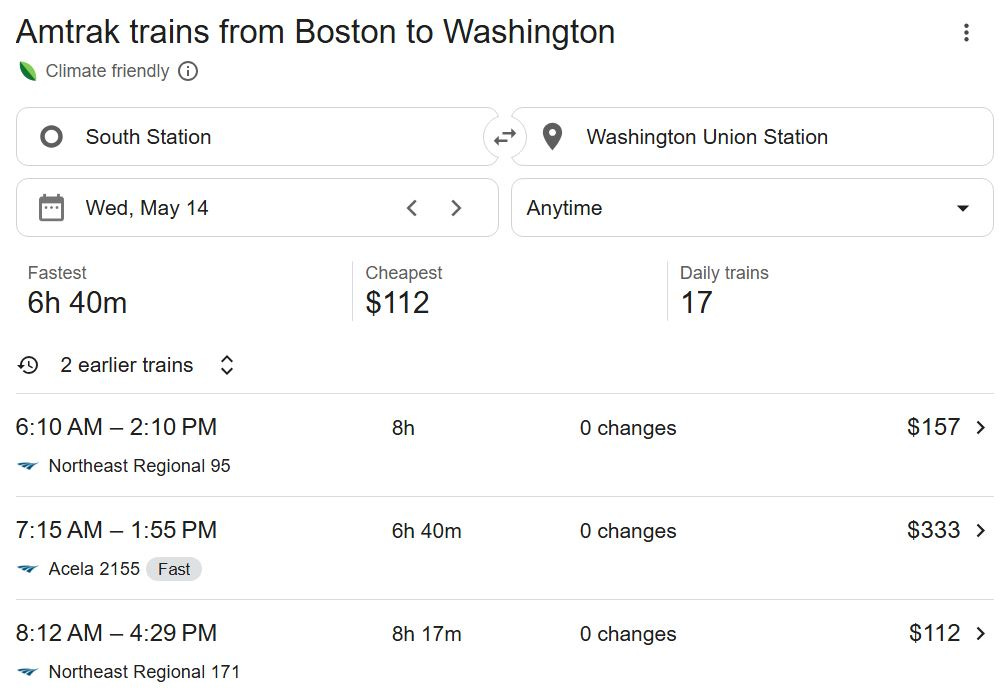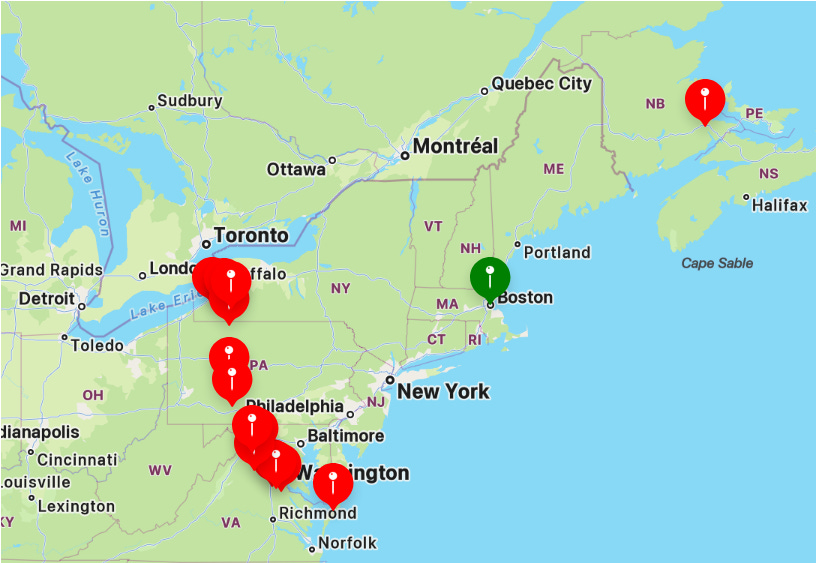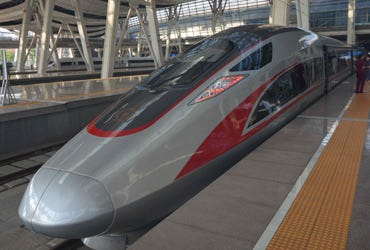I had a Zoom meeting yesterday with someone who lives in Pau, near the Pyrennes in southwestern France. She mentioned that I could get there in 4 hours from Paris, so I decided to check.
I’d never heard of Pau, but soon learned that it’s a place for “slow tourism” and that “visitors are immersed in the cultural splendours of the Béarn, rubbing shoulders with artisans, passionate gourmands and reconnecting with nature.”
That sounds like the Berkshires to me.
The fastest train between Paris and Pau takes just over 4 hours to travel the 796km/500 miles, and the cost is well under $100 (I saw offers as low as 25 Euros).
A similar distance on Amtrak’s Acela, its star fleet, takes close to 7 hours and costs much more. And Acela only links a couple of major cities, whereas Pau is a city of 80,000, not a major metropolis. The French system spans the country, opening up all kinds of possibilities. Imagine starting in Boston and traveling to places 500 miles away. Here are options from the Within Hours website:
Then there’s China
In the same 4 hours it takes to travel from Paris to Pau, you can travel the 819 miles between Shanghai and Beijing (something I’ll probably be doing next month on my return trip). Read about this trip at Mark Smith’s Seat61.com, a terrific website for train travel anywhere in the world.
Yes, China has the advantage of government control over land use that makes it easier to build new train lines. But France and Japan, crowded democratic countries, have been building high-speed train systems for many decades, while we lump along with trains that haven’t changed since the 1960s, and that often go more slowly than did trains in the 19th century. This is not a matter of money but of will and intelligent focus.
A note from The Netherlands
Here’s the bit that made me think about trains, because walkability is so closely connected with good public transportation:
Robin and I are currently in Leiden, which is a lovely town not far from Amsterdam. And after spending yesterday walking around, we both felt depressed. Why? Because the Dutch have so many nice things that we deny ourselves at home.
Disclaimer: Yes, we’ve spent our time here in affluent, attractive areas. I know that there are depressed areas in the Netherlands, some of them not far from here. Still, I don’t think it’s wrong to say that life for most people here is pretty good, with far fewer people in misery than there are in America. And life isn’t just less nasty and brutish; it’s also longer, with Dutch life expectancy 4 years higher than ours.
Urban life is especially appealing. Leiden, and I’m told many other Dutch cities, is spectacularly walkable — and people do indeed walk. They also ride bicycles, thanks both to dedicated bike lanes everywhere and a culture in which commuting and shopping by bike is normal for people of all ages.
Krugman hasn’t written about trains recently but in 2011 he wrote that “of the three modes of mechanized transport I use, trains are by far the most liberating.”
Do you have a question? Here’s how to ask:
Write your question as a comment and we’ll answer it for everyone. If you have a personal or priority question, sign up for a paid subscription and then write to Train Time by replying to any of our posts.
All content in Train Time is shared under a Creative Commons License (CC BY-NC-ND):
Attribution (BY) – Always credit the author and Train Time as the original creator with a tag or link to https://traintime.substack.com.
Non-Commercial (NC) – Content cannot be used for commercial purposes.
No Derivatives (ND) – Content may not be modified, adapted, or repurposed.









